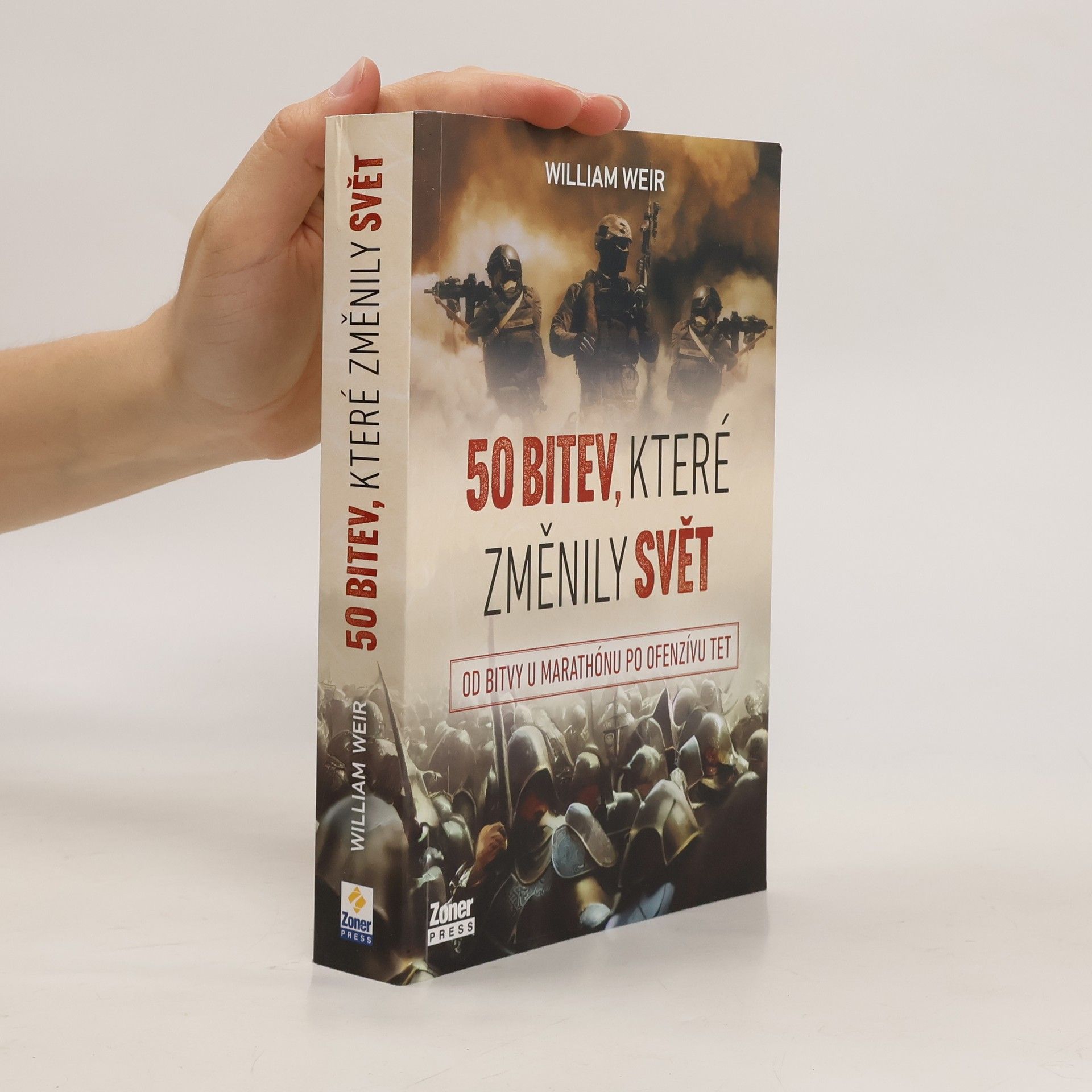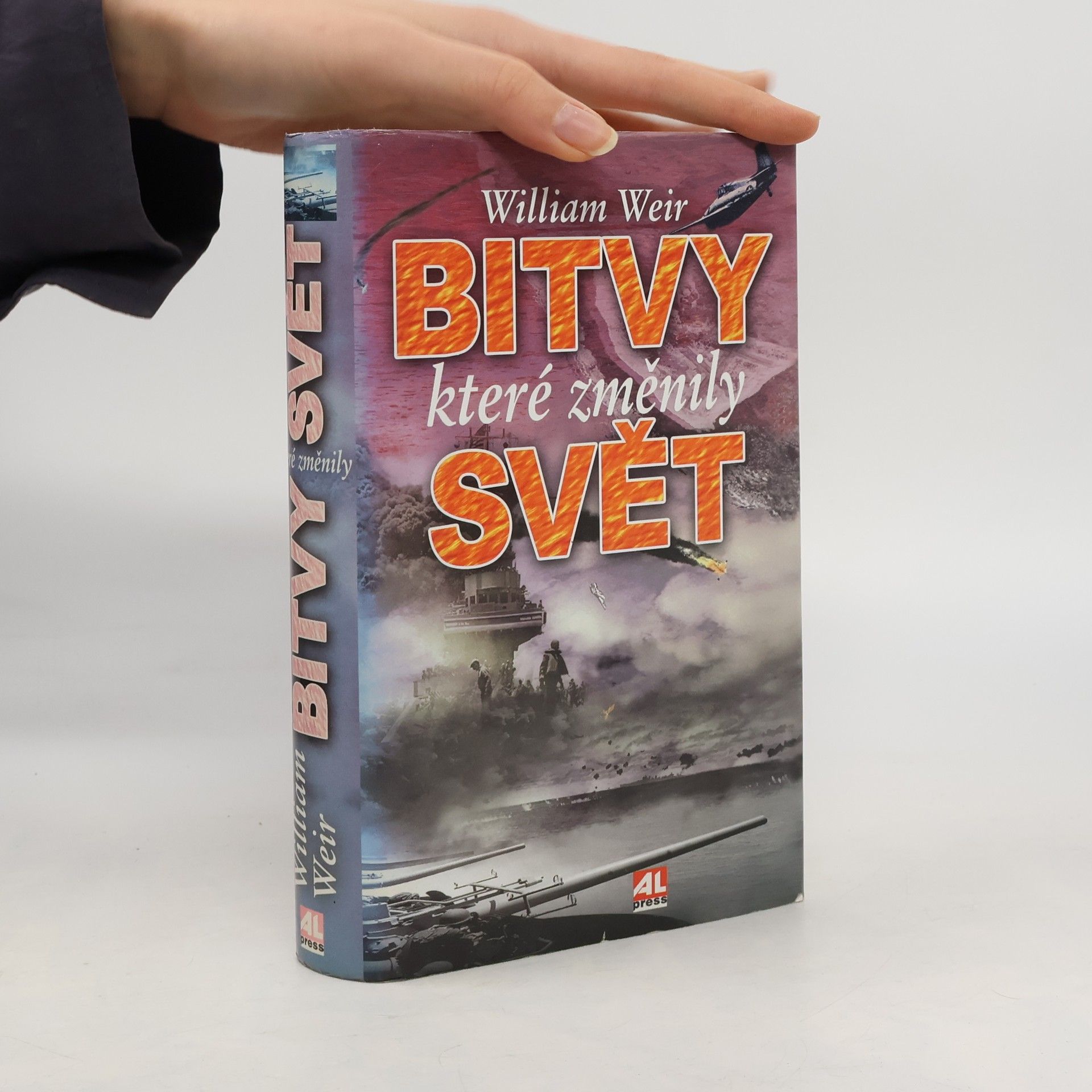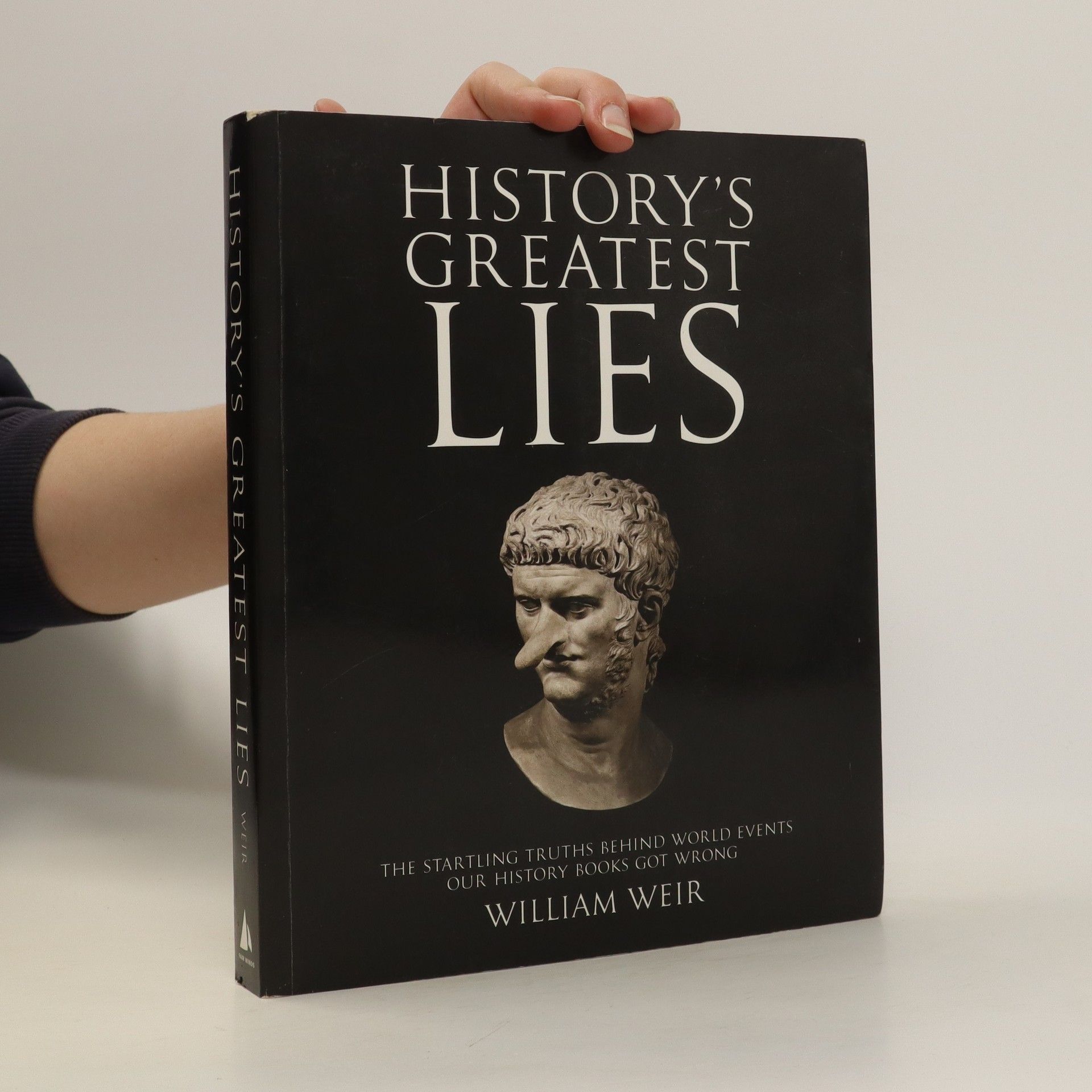Je padesát bitev málo, nebo moc? William Weir na reprezentativním vzorku ozbrojených konfliktů ukazuje, že dějiny skutečně píší vítězové! 50 bitev, které změnily svět (50 Battles That Changed the World) není kniha oslavující válčení.Přináší jiný pohled na světové dějiny – William Weir se zaměřuje na klíčové bitvy, které výrazně pohnuly kolem dějin a jejichž význam byl, jak historie prokázala, naprosto zásadní pro uspořádání světa tak, jak ho známe nyní. Jednotlivé konflikty sahají od dávné minulosti až do dvacátého století. Některé jsou notoricky známé – Marathón, Waterloo, Midway či Stalingrad, některé ale zastřela mlha dějin a my na jejich význam trochu pozapomínáme – povstání Níká, Dublin, Emauzy… Naučili jsme se vnímat dějiny jako sled jednotlivých dat, ale málokdy je umíme vnímat v souvislostech. Kniha 50 bitev, které změnily svět právě ony významné a pro pochopení kontextu zásadní souvislosti poskytuje. Zjistíme, že žádná bitva nevznikla „zčistajasna“, že každému ozbrojenému konfliktu, ať už válečnému, nebo civilnímu, předcházela série problémů, nedorozumění, frustrace či prostě touha po moci a že vítězství jedné či druhé strany nebylo tak samozřejmé, jak se nám s odstupem času může jevit. A také se dozvíme, že ani ve „velkých dějinách“ není nouze o naprosto nepravděpodobné náhody. Je nesporné, že výsledky některých bitev či rozhodujících střetnutí zapříčinily zánik, nebo naopak přežití národů, států, či dokonce celých civilizací. Jak ale vybrat ty nejzásadnější? Autor se orientuje podle následujících aspektů: přínos pro demokracii a svobodu, střet mezi západní a východní kulturou, výboje a pokusy o nadvládu nad jinými národy atd. Války nejsou jen mechanismem sloužícím k zabíjení, jsou i prostředkem technologického pokroku. Je až s podivem, kolik konfliktů bylo zásadně ovlivněno rozdílnou kvalitou technického vybavení soupeřících stran či inovativní vojenskou taktikou a nakolik tyto „vynálezy“ změnily tvář nadcházejících bojů. Ačkoliv z takového úhlu možná o vojevůdcích a vojenských velitelích příliš nepřemýšlíme, drtivá většina z nich si kladla za cíl ušetřit co nejvíc životů svých vojáků, a proto inovovali vybavení i taktiku boje tak, aby při plnění vojenských cílů padlo co nejmenší procento jejich mužstva. Autor nemá prostor na obšírné líčení dobového kontextu a běžného života vojáka v poli (o civilistech, které každá válka zasáhne nejbolestivěji ani nemluvě), ale i přes to před nás předkládá obraz pětadvaceti století, kterými se jako krvavá linie táhne historie fatálních bitev, bez kterých by naše současnost vypadala dozajista úplně jinak. O autorovi William Weir je vojenský historik a publicista, autor téměř dvou desítek vysoce hodnocených knih, převážně zaměřených na vojenství a zbraně. Written with Lead, Fatal Victories, A Well Regulated Militia, Soldiers in the Shadows, Turning Points in Military History, 50 Weapons that Changed Warfare a další. Žije v Guilfordu v Connecticutu.
William Weir Book order






- 2023
- 2023
In 1958, an anonymous group of overworked and under-budgeted BBC employees set out to make some new sounds for radio and TV. They ended up changing the course of 20th-century music. For millions of people, the work of the BBC Radiophonic Workshop was the first electronic music they had ever heard. Sampling, loops, and the earliest synthesizers-long before audiences knew what they were-made up the groundbreaking scores for news programs, auto maintenance shows, and children's programming. They also produced the Doctor Who theme, one of the first electronic music masterpieces. The Beatles, Pink Floyd, and others borrowed from them. A generation of musicians raised on BBC programming-Aphex Twin, Portishead, and Prodigy among them-took these once-alien sounds and carried on the Workshop's legacy. Ignored for decades by music historians, the Workshop is now recognized as one of the most influential forebears of electronica, psychedelia, ambient music, and synth-pop.
- 2022
Od Maratonu przez Hastings, Konstantynopol, Waterloo, Bitwę Warszawską po Stalingrad Każda bitwa wpływa na bieg historii. Ale jak ustalić, która najbardziej zaważyła na losach świata? Według jakich kryteriów to oceniać? William Weir przedstawia 50 bitew według doniosłości historycznej, znaczenia dla walki o demokrację i dla przebiegu konfliktu Wschodu z Zachodem na przestrzeni dziejów. Listę otwiera pierwsze stracie dwóch cywilizacji, dzięki któremu przetrwała pierwsza demokracja w dziejach świata – zwycięstwo Greków pod Maratonem. Dalej mamy bitwy dobrze znane (Hastings czy Waterloo) i takie, o których wiedzą tylko historycy (pod Diu czy w dolinie Jarmuka). O polskich bitwach – pod Grunwaldem, pod Wiedniem i o Bitwie Warszawskiej – napisał polski historyk, dr Andrzej Klubiński. I tak powstał pasjonujący przegląd toczonych na lądzie i morzu w ciągu 2500 lat starć zbrojnych, które zmieniły świat. WILLIAM WEIR – wybitny znawca historii wojskowości, amerykański dziennikarz i pisarz, korespondent wojenny i fotoreporter armii Stanów Zjednoczonych w czasie wojny w Korei, autor popularnych książek (m.in. 50 broni, które zmieniły sposób prowadzenia wojen).
- 2009
The true stories behind historical events give readers a fascinating new look at our past. The revelations shock and amaze by exposing veiled motivations and convenient inaccuracies in well-documented actions by established leaders that often have a continuing effect on the world.Each of the fifteen chapters points out a myth that is held as a common truth in history and summarizes what we think we know. Then the author shreds the tale to academic ribbons using the latest findings on each subject. Each true story sets the record straight, reveals timeless ulterior motives, introduces important personalities who successfully (and suspiciously) avoided responsibility in common history texts, and notes underlining issues that have continued relevance in the modern age. For instance, did Nero really fiddle as Rome burned? Did Paul Revere actually alert the militia that the British were coming? Did the Catholic Church imprison Galileo because his teachings conflicted with the Bible? Weir takes on all these myths and tells the reader what really happened.
- 2007
Zbraně, které změnily svět
- 368 pages
- 13 hours of reading
Válka je stálou součástí lidských dějin a každá další vlna technického pokroku je provázena novými zbraněmi. Pět desítek zbraní, které zásadním způsobem zasáhly do povahy válčení, posunuly vpřed vývoj lidského myšlení a přispěly k trvalé proměně světa.
- 2004
Bitvy, které změnily svět
- 534 pages
- 19 hours of reading
Konflikty, bitvy, boje a války jsou zřejmě nedílnou, temnější součástí lidských dějin. Je nesporné, že výsledky některých bitev či rozhodujících střetnutí zapříčinily zánik nebo naopak přežití národů, států či dokonce celých civilizací. Každý podobný výběr je ale nutně velmi subjektivní. Autor se řídil následujícími hledisky a měřítky: přínos bitvy pro demokracii a svobodu, střet mezi západní a východní kulturou, výboje a pokusy o nadvládu nad jinými národy atd. Při líčení jednotlivých událostí se autor téměř výhradně věnuje barvitému až květnatému popisu vlastního střetnutí, již méně se zabývá okolnostmi či podmínkami, které k bitvě vedly, a hlavně dozvukům a následkům bojů, jejich významem pro budoucnost. Bitvy nejsou řazeny abecedně či chronologicky, ale ani podle vlastních kritérií autora. Některé názory a soudy jsou více než polemické. Fotografie, kresby, mapky, jmenný rejstřík, dodatky Výběr padesáti bitev z posledních 25 století, které, podle autora, výrazně a zásadně ovlivnily běh historických událostí ve světě